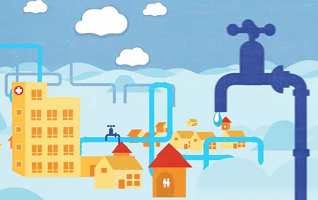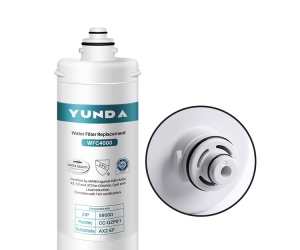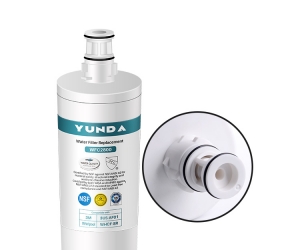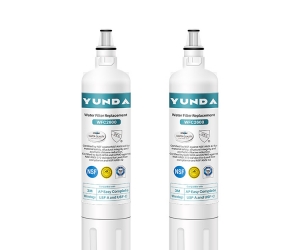When it comes to water health, people must be most concerned about the tap water they drink every day. So how is tap water made? They are actually made of rivers, lakes and groundwater. The rivers, lakes and natural waters around your city are the source of tap water. People living on the edge of the Yellow River usually drink tap water made from the water of the Yellow River; Indians living on the side of the Ganges River drink the Ganges River. Therefore, there is a saying that "A side water and soil raises a side people". How does water in nature make tap water? Let's take a look at the water making process.
For the water in rivers and lakes, the waterworks will find a relatively clean section as the water source, and then lead such water to the waterworks through pipes.
One of the first thing that waterworks should do is to precipitate and purify the water. The purification method is very simple. Alum coagulants such as aluminum sulfate and ferric chloride are put in. The floc-like, loose precipitate formed by coagulant has strong adsorption. In the process of self rapid settlement, it will carry all kinds of solid impurities around to precipitate together. In this way, the turbid water can be turned into clear and transparent water in a short time. The settled water in the upper part of the settling pool also needs to be filtered by quartz sand. Some particles that cannot be removed by sedimentation are retained on the surface of quartz sand, making the water more clear and transparent.
However, the clear and transparent water may not be safe and standard water, so the professionals of the waterworks should test the water quality to see if there are chemicals and heavy metals that cannot be seen by the naked eye. However, there are still some substances that can not be removed by waterworks, such as lead and mercury. The solution to this problem is usually to add other clean water sources, dilute the water with lead and mercury with water without lead and mercury, so as to reduce the lead and mercury concentration in the water to the range of national water standards.
What is left in the water now? There are still viruses and bacteria left. The water needs to be disinfected. After the water enters the disinfection pool, chlorine is put inside to disinfect and remove the virus and bacteria in the water. Nowadays, chlorination method is widely used in the disinfection of tap water. The main purpose of chlorination of public water supply is to prevent water-borne diseases. This method has been popularized for more than 100 years. Chlorine disinfection has good effect and low cost. However, through the understanding and research of theoretical data, it is found that there are still some disadvantages in chlorine used for disinfection of tap water. Chlorinated tap water can produce carcinogens.
The water in line flows to every household through pipes, and becomes the tap water in our life.
The tap water is easy to be polluted at the source, transportation process and even the terminal. The water filter system can ensure the safety of drinking water, remove the residual chlorine, heavy metals, bacteria, viruses and other substances that cannot be removed by the waterworks, do not worry about the secondary pollution during the transportation and storage of tap water, and help us drink better and cleaner water.





